40 endosymbiotic theory diagram
Mitochondria - Definition, Function & Structure | Biology ... 2020-05-08 · Endosymbiotic theory has multiple forms of evidence. For example, mitochondria have their own DNA that is separate from the DNA in the cell’s nucleus. It is called mitochondrial DNA or mtDNA, and it is only passed down through females because sperm do not have mitochondria. You received your mtDNA from your mother, and you can only pass it on if you … Paramecium Reproduction, Physiology, and Behaviors - Rs ... For detailed step-by-step information of conjugation, see the schematic diagram below. [In this figure] Steps of paramecium’s conjugation. (A) Two cells of compatible mating types meet and align side by side. They become partially fused and form a protoplasmic bridge in-between. At this stage, their micronuclei are diploid (2n). (B) Each cell undergoes meiosis to produce 4 haploid …
The Endosymbiosis Theory: Evolution of Cells - Video ... The endosymbiotic theory states that some of the organelles in prokaryotic cells were once from eukaryotic organisms. 3. The mitochondria contain genetic material separate from that of the host ...
Endosymbiotic theory diagram
en.wikipedia.org › wiki › SymbiogenesisSymbiogenesis - Wikipedia Symbiogenesis, endosymbiotic theory, or serial endosymbiotic theory, is the leading evolutionary theory of the origin of eukaryotic cells from prokaryotic organisms. The theory holds that mitochondria, plastids such as chloroplasts, and possibly other organelles of eukaryotic cells are descended from formerly free-living prokaryotes (more closely related to bacteria than to archaea) taken one ... Mitochondria: Structure, Functions and Diagram - StudiousGuy Endosymbiotic Theory. Endosymbiotic theory states that the mitochondria and chloroplast are a result of endocytosis (engulfment) of the aerobic bacteria (prokaryote) by a eukaryotic cell. A large aerobic bacteria which would not have been able to survive otherwise, fused with the eukaryotic cell. What are 3 pieces of evidence for the Endosymbiotic theory ... The evidence supporting the endosymbiotic theory for mitochondria and chloroplasts: • They have their own DNA (which is naked and circular) • They have ribosomes that are similar to prokaryotes (70S) • They have a double membrane and the inner membrane has proteins similar to prokaryotes • They are roughly the same ….
Endosymbiotic theory diagram. › organelles-meaning-373368What Is an Organelle? - ThoughtCo 2019-06-07 · An organelle is a tiny cellular structure that performs specific functions within a cell.Organelles are embedded within the cytoplasm of eukaryotic and prokaryotic cells.In the more complex eukaryotic cells, organelles are often enclosed by their own membrane.Analogous to the body's internal organs, organelles are specialized and perform valuable functions necessary for … File:DIAGRAM JEON EXPERIMENT- Endosymbiotic Theory ... DIAGRAM JEON EXPERIMENT- Endosymbiotic Theory Evidence.svg. English: In 1966 Microbiologist Kwang Jeon conducted an experiment with amoebae communities providing real-life evidence for the endosymbiotic theory. The single-celled amoebae community was infected by a bacterial infection of x-bacteria. The x-bacteria caused many of the amoebae to ... Serial Endosymbiosis Serial Endosymbiotic Theory proposes that "symbiotic consortiums" of prokaryote cells were the ancestors of eukaryotic cells. In ecology, symbiosis indicates that two different organisms live in association with one another, and nature abounds with examples of 'economic' symbiotic relationships. Evidence for endosymbiosis - Understanding Evolution Evidence for endosymbiosis. Biologist Lynn Margulis first made the case for endosymbiosis in the 1960s, but for many years other biologists were skeptical. Although Jeon watched his amoebae become infected with the x-bacteria and then evolve to depend upon them, no one was around over a billion years ago to observe the events of endosymbiosis.
Endosymbiont Theory - About the Origin of Mitochondria and ... Endosymbiotic theory tries to explicate about the origins of cell organelles of eukaryotes such as mitochondria and chloroplasts. Endosymbiont theory was originally put forward by biologist L. Margulis in the 1960s. Mitochondria is usually well thought-out to have arisen from proteobacteria (order:Rickettsiales) by endosymbiosis. Answered: CATestprep LLC-Online State-… | bartleby The Endosymbiotic Theory proposes that the organelles distinguishing eukaryote cells evolved through symbiosis of individual single-celled prokaryotes. Which of these statements provides supporting evidence for the endosymbiotic theory? A) Chloroplasts have a single phospholipid membrane. B) The DNA in mitochondria has been traced to viral DNA. researchtweet.com › endosymbiotic-theoryEndosymbiotic Theory: Definition, Theory, and Examples Sep 01, 2021 · Endosymbiotic theory suggests that the eukaryotic cell’s organelles, such as mitochondria and chloroplasts, evolved as a result of early endosymbiosis between prokaryotic endosymbionts and the eukaryotic host cell. The Endosymbiotic hypothesis is one of the oldest evolutionary hypotheses still in use today. Endosymbiotic Theory - Definition and Evidence | Biology ... Endosymbiotic Theory Definition. Endosymbiotic theory is the unified and widely accepted theory of how organelles arose in organisms, differing prokaryotic organisms from eukaryotic organisms. In endosymbiotic theory, consistent with general evolutionary theory, all organisms arose from a single common ancestor.
AP BIOLOGY EXAM ESSAY (FREE RESPONSE) QUESTIONS c. Explain the endosymbiotic theory of the origin of eukaryotic cells and discuss an example of evidence supporting this theory. #10 B (2002) #10C. PHOTOSYNTHESIS, RESPIRATION, PRODUCTIVITY of an ECOSYSTEM, ENERGY TRANSFER #11 #12. Photosynthesis and cellular respiration recycle oxygen in ecosystems. Respond to TWO (and only two) of the ... › evidence-of-endosymbiotic10 Best Evidence of Endosymbiotic Theory - Microbial Facts Evidence of endosymbiotic theory support that mitochondria and chloroplasts originated from prokaryotic cells. In this article, 10 evidence of endosymbiotic theory is discussed that support the endosymbiotic theory and show how eukaryotic cells originated from bacteria.. Question is- how mitochondria and chloroplasts resemble with bacteria or what are the evidences that mitochondria and ... PDF The Endosymbiotic Theory - YSJournal lead to The Endosymbiotic Theory. Theory. Researchers comparing the structures of prokaryotes . and cell organelles, as shown in Figure 2, came to the conclusion that organelles such as mitochondria and chloroplasts had originally been bacteria that were taken into larger bacteria by endocytosis and not digested. PDF Phycology: Evolutionary Theory of Endosymbiosis Study ... 4. Describe several other examples of modern endosymbiotic relationships involving Cyanobacteria. For each relationship, describe the advantage to the Cyanobacteria, and describe the advantage to the host. 5. Define primary endosymbiosis, and draw a diagram that illustrates primary endosymbiosis. (See Fig. 7-2 in the textbook.) 6.
Endosymbiotic Theory Diagram | Quizlet Endosymbiotic theory Explains how larger prokaryotic cells engulfed smaller prokaryotic cells. These smaller cells inside the larger cell evolved into organelles over time.
Endosymbiotic Theory | Ask A Biologist The theory that explains how this could have happened is called endosymbiotic theory. An endosymbiont is one organism that lives inside of another one. All eukaryotic cells, like your own, are creatures that are made up of the parts of other creatures.
PDF Chapter 19.3 GUIDED READING KEY - isd2135.k12.mn.us The diagram below shows the stages in the endosymbiotic theory. Follow the directions to finish the diagram. 10. Draw the final step in the endosymbiotic theory. Your drawing should show a primitive eukaryotic cell that performed photosynthesis. 11. Label the chloroplast in your drawing. Ancient Anaerobic SAncient Aerobi 'Prokaryote' prokaryote'
lecerveau.mcgill.ca › endosymbiotic_theoryEndosymbiotic Theory - McGill University Endosymbiotic Theory The Endosymbiotic Theory of Eukaryote Evolution was first proposed by former Boston University Biologist in the 1960's and officially in her 1981 book " ". Although now accepted as a plausible theory, bothshe and her theory were ridiculed by mainstream biologists for a number of years.
PPTX PowerPoint Presentation Endosymbiotic theory. A scientist named Lynn Margulis put all of this information together and published it in 1967. Her paper was called . On . the . Origin . of . Mitosing. Cells. Eukaryotic cells undergo mitosis. Today scientists know her paper is very important, but it took many years before they accepted her theory.
Endosymbiosis theory (video) | Khan Academy Endosymbiosis theory. The theory of how mitochondria, chloroplasts and other membrane-bound organelles in eukaryotic cell likely arose from a symbiosis between aerobic prokaryotes and host anaerobic eukaryotic ancestors. Developed by Lynn Margulis. This is the currently selected item.
Endosymbiotic Theory of the Origin of Eukaryotic Cells The endosymbiotic theory of the origin of eukaryotic cells states that all the individuals are evolved from the same individual. In accordance with the endosymbiotic theory of origin of eukaryotic cells, the eukaryotes have evolved from number of cells that happened to join together and form a single eukaryotic cell.
en.wikipedia.org › wiki › EndosymbiontEndosymbiont - Wikipedia A representation of the endosymbiotic theory. An endosymbiont or endobiont is any organism that lives within the body or cells of another organism most often, though not always, in a mutualistic relationship. (The term endosymbiosis is from the Greek: ἔνδον endon "within", σύν syn "together" and βίωσις biosis "living".) Examples are nitrogen-fixing bacteria (called rhizobia ...
Community (ecology) - Wikipedia In ecology, a community is a group or association of populations of two or more different species occupying the same geographical area at the same time, also known as a biocoenosis, biotic community, biological community, ecological community, or life assemblage.The term community has a variety of uses. In its simplest form it refers to groups of organisms in a specific place or …
Endosymbiosis: Lynn Margulis - Understanding Evolution Margulis and others hypothesized that chloroplasts (bottom) evolved from cyanobacteria (top). Chloroplast image courtesy of New Mexico State University Electron Microscopy Laboratory; Cyanobacterium image courtesy of the University of Tsukuba Institute of Biological Sciences. The Modern Synthesis established that over time, natural selection acting on mutations could generate new adaptations ...
Eukaryotic Cells- Definition, Characteristics, Structure ... Eukaryotic Cell Diagram illustrated above shows the presence of a true nucleus. Eukaryotic Cell Cycle. The eukaryotic cells divide during the cell cycle. The cell passes through different stages during the cycle. There are various checkpoints between each stage. Quiescence (G0) This is known as the resting phase, and the cell does not divide during this stage. The cell cycle starts …
Endosymbiotic Theory: How Eukaryotic Cells Evolve The endosymbiotic theory is the accepted mechanism for how eukaryotic cells evolved from prokaryotic cells. It involves a cooperative relationship between two cells which allow both to survive—and eventually led to the development of all life on Earth.
Endosymbiotic Theory | Other Quiz - Quizizz The endosymbiotic theory states that early eukaryotic cells ingested prokaryotic cells called endosymbionts. This lead to a symbiotic relationship between the larger and smaller cells. Endosymbiotic relationships may have led to mitochondria and chloroplasts.
The Endosymbiotic Theory - Google Search A diagram to show 'The Endosymbiotic Theory' 70s Ribosomes Another piece of evidence that could associate Mitochondria with prokaryotic cells are the 70s ribosomes they both contain, which eukaryotic cells do not. Furthermore their mechanism for protein synthesis is more similar to that of a prokaryote then a eukaryote.
› pmc › articlesEndosymbiotic theories for eukaryote origin 4. The origin of mitochondria (and chloroplasts) Endosymbiotic theory for the origin of chloroplasts and mitochondria started again with Mereschkowsky [] and his idea about a symbiosis between 'chromatophores' (plastids) and a heterotrophic amoeboid cell.He contradicted the orthodox view that chromatophores are autogenous organs of the plant cells; he saw them as symbionts, extrinsic ...
Endosymbiotic Theory Diagram | Quizlet Start studying Endosymbiotic Theory. Learn vocabulary, terms, and more with flashcards, games, and other study tools.
The Evolution of the Cell - University of Utah The endosymbiotic theory describes how a large host cell and ingested bacteria could easily become dependent on one another for survival, resulting in a permanent relationship. Over millions of years of evolution, mitochondria and chloroplasts have become more specialized and today they cannot live outside the cell.
Endosymbiosis - an overview | ScienceDirect Topics Endosymbiosis. According to the endosymbiosis theory, the host cell engulfed the bacterium, and instead of digesting it as food, it negotiated a functional relationship that enabled the host cell/endosymbiont to utilize oxygen in energy metabolism. From: Encyclopedia of Fish Physiology, 2011. Download as PDF.
Endosymbiosis Theory Overview & Examples | What Is ... The endosymbiotic theory diagram depicts aerobic and photosynthetic prokaryotes being engulfed by another cell and eventually evolving into mitochondria and chloroplasts.
What are 3 pieces of evidence for the Endosymbiotic theory ... The evidence supporting the endosymbiotic theory for mitochondria and chloroplasts: • They have their own DNA (which is naked and circular) • They have ribosomes that are similar to prokaryotes (70S) • They have a double membrane and the inner membrane has proteins similar to prokaryotes • They are roughly the same ….
Mitochondria: Structure, Functions and Diagram - StudiousGuy Endosymbiotic Theory. Endosymbiotic theory states that the mitochondria and chloroplast are a result of endocytosis (engulfment) of the aerobic bacteria (prokaryote) by a eukaryotic cell. A large aerobic bacteria which would not have been able to survive otherwise, fused with the eukaryotic cell.
en.wikipedia.org › wiki › SymbiogenesisSymbiogenesis - Wikipedia Symbiogenesis, endosymbiotic theory, or serial endosymbiotic theory, is the leading evolutionary theory of the origin of eukaryotic cells from prokaryotic organisms. The theory holds that mitochondria, plastids such as chloroplasts, and possibly other organelles of eukaryotic cells are descended from formerly free-living prokaryotes (more closely related to bacteria than to archaea) taken one ...




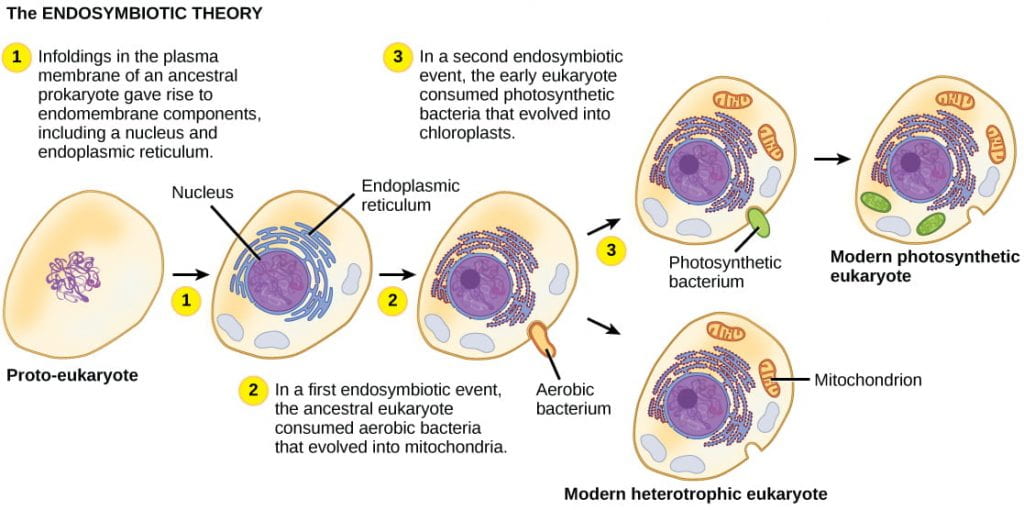




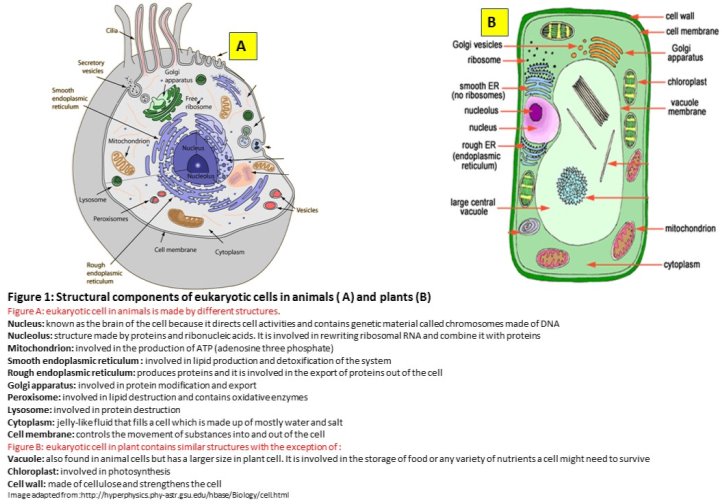
/2000px-Celltypes.svg-58f4417b3df78cd3fcb40917.png)
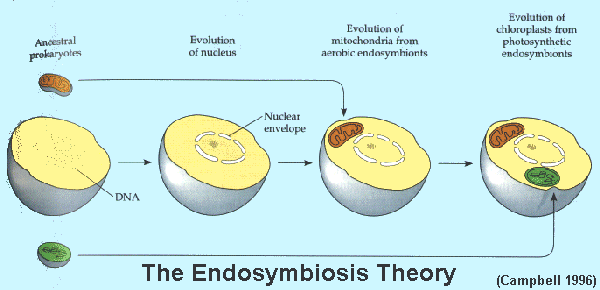

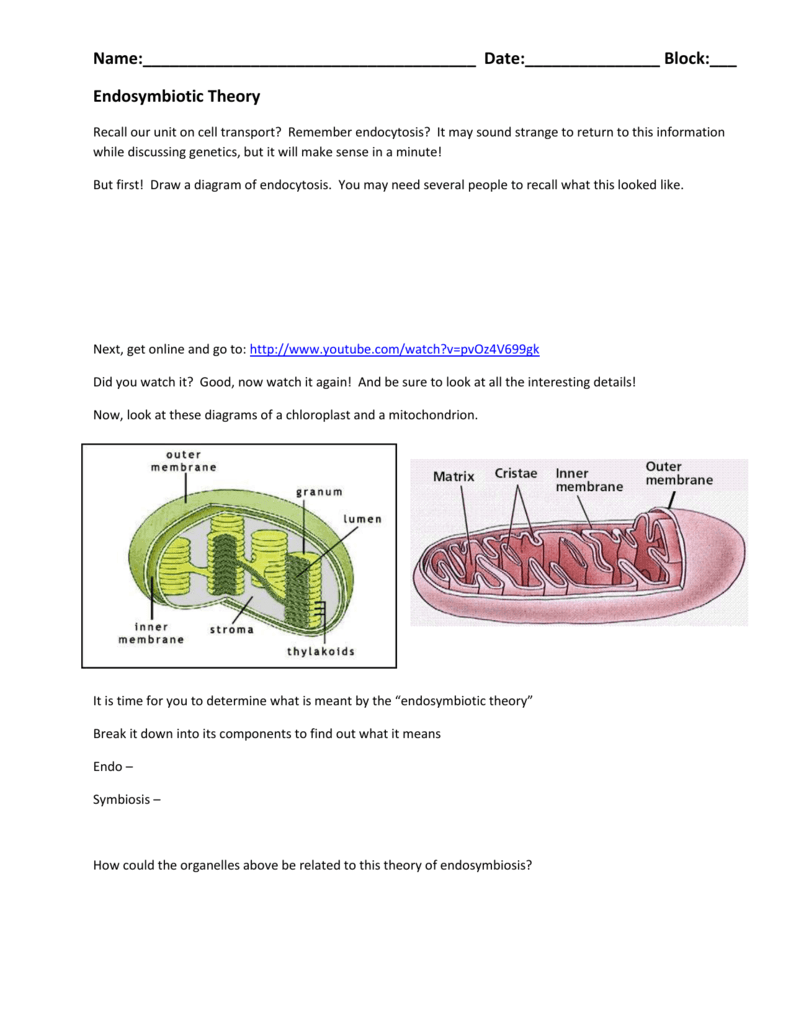
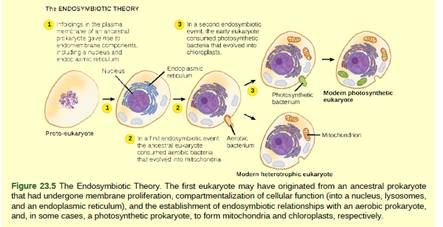
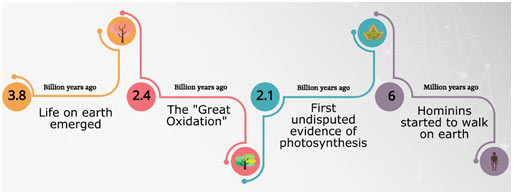

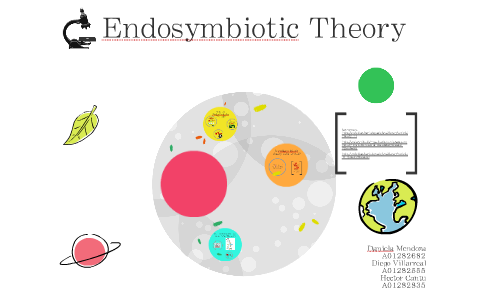
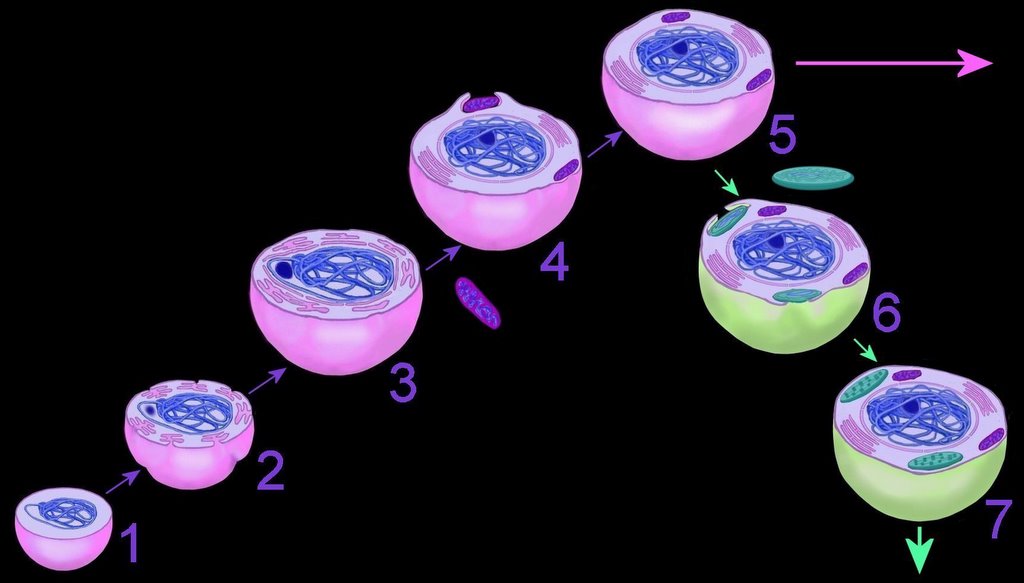
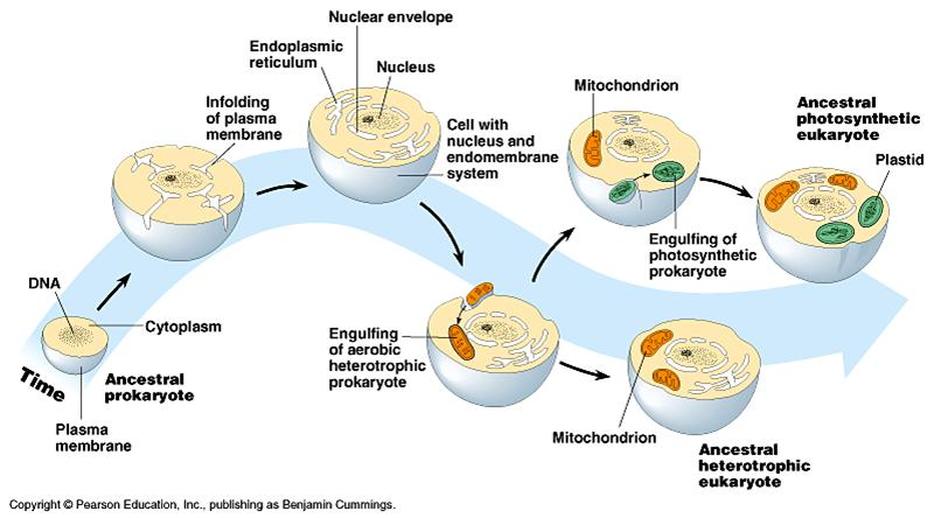



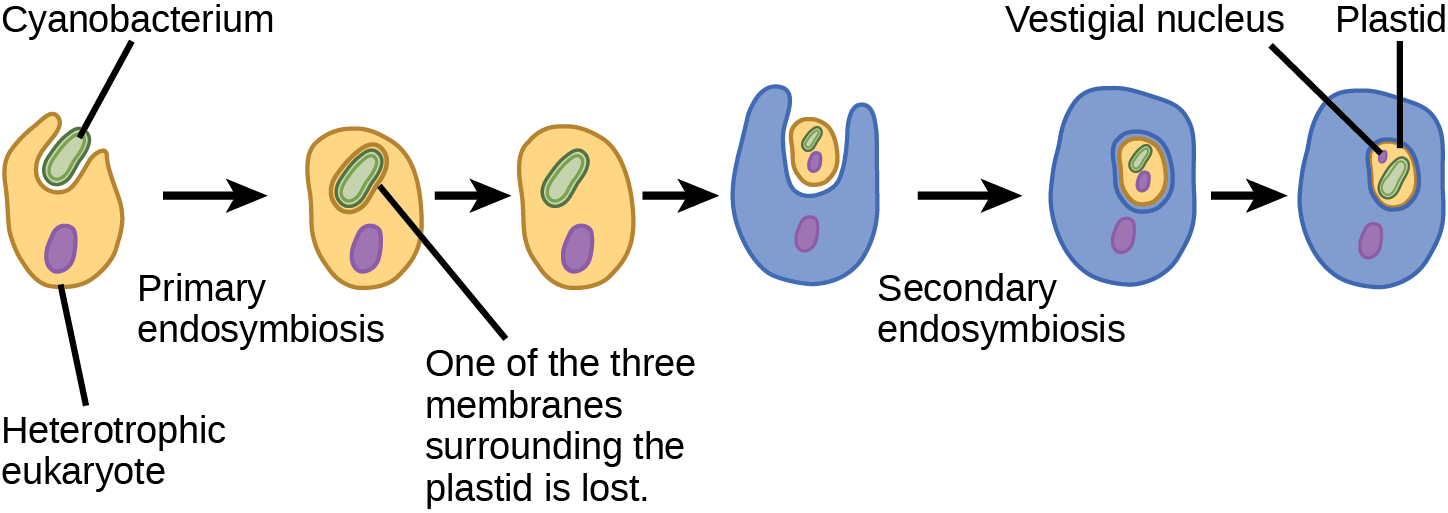
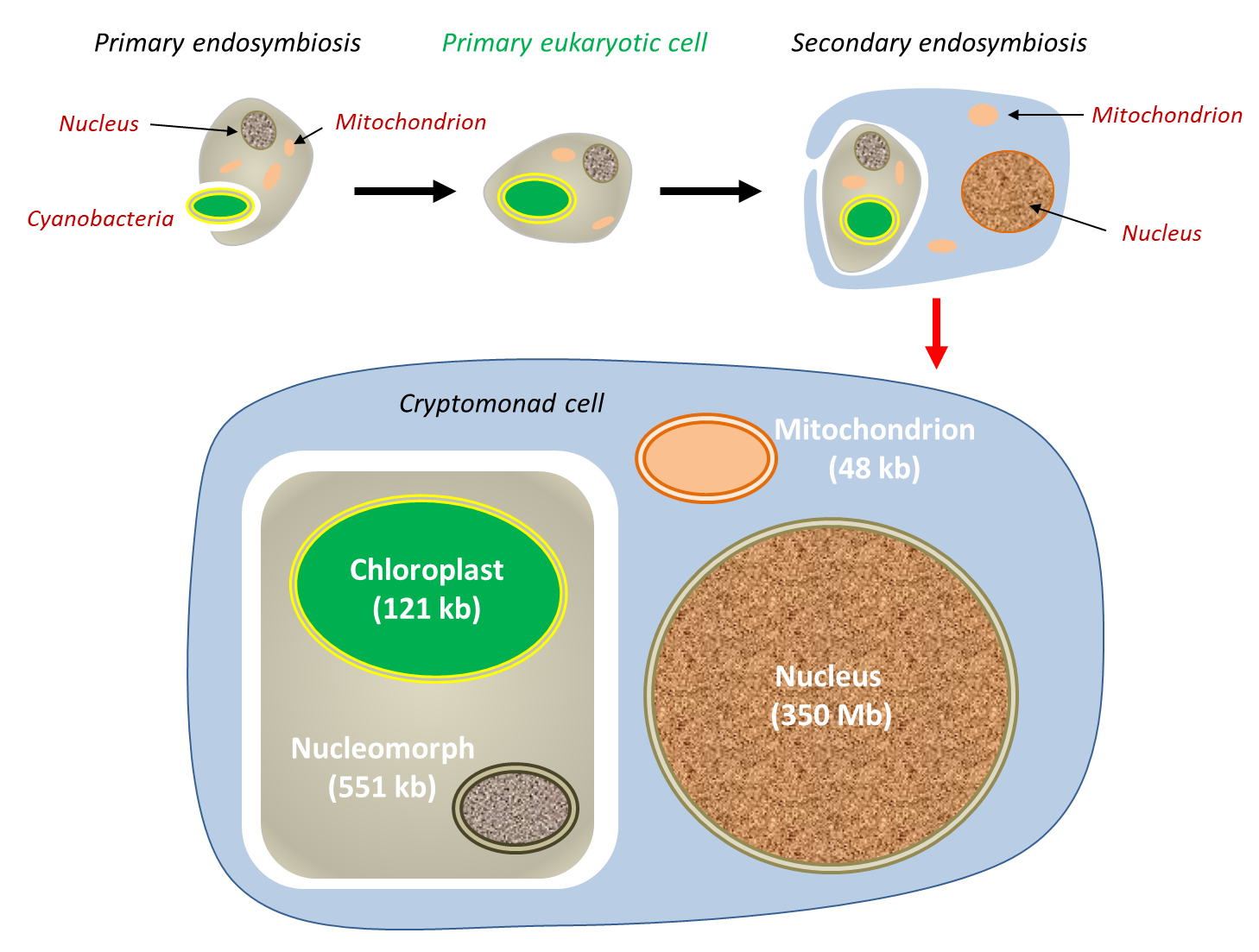

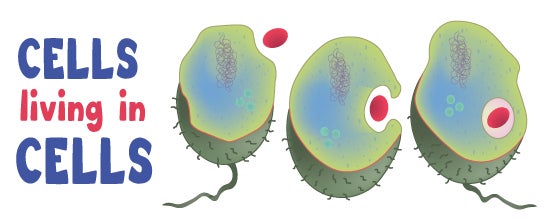
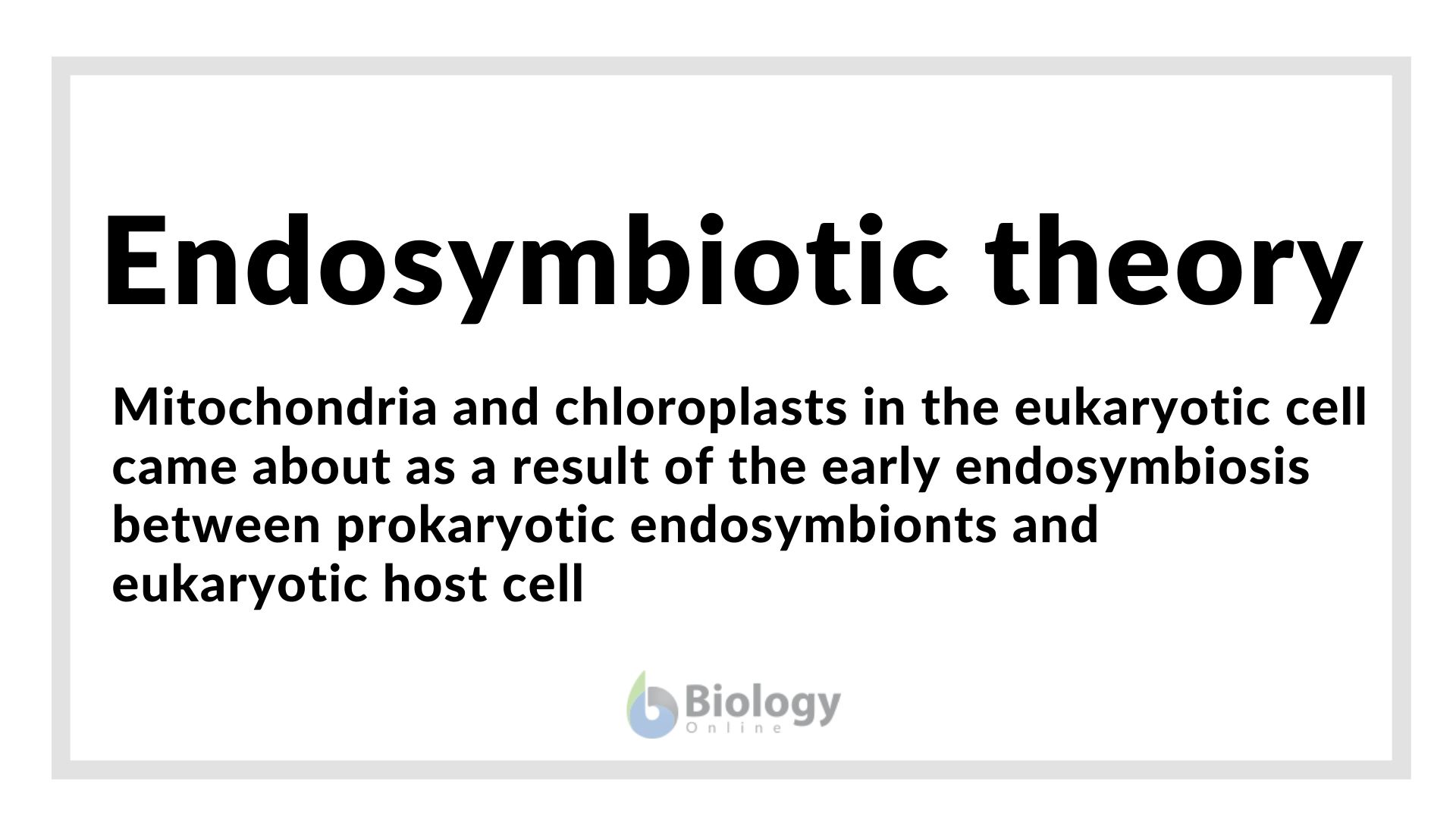
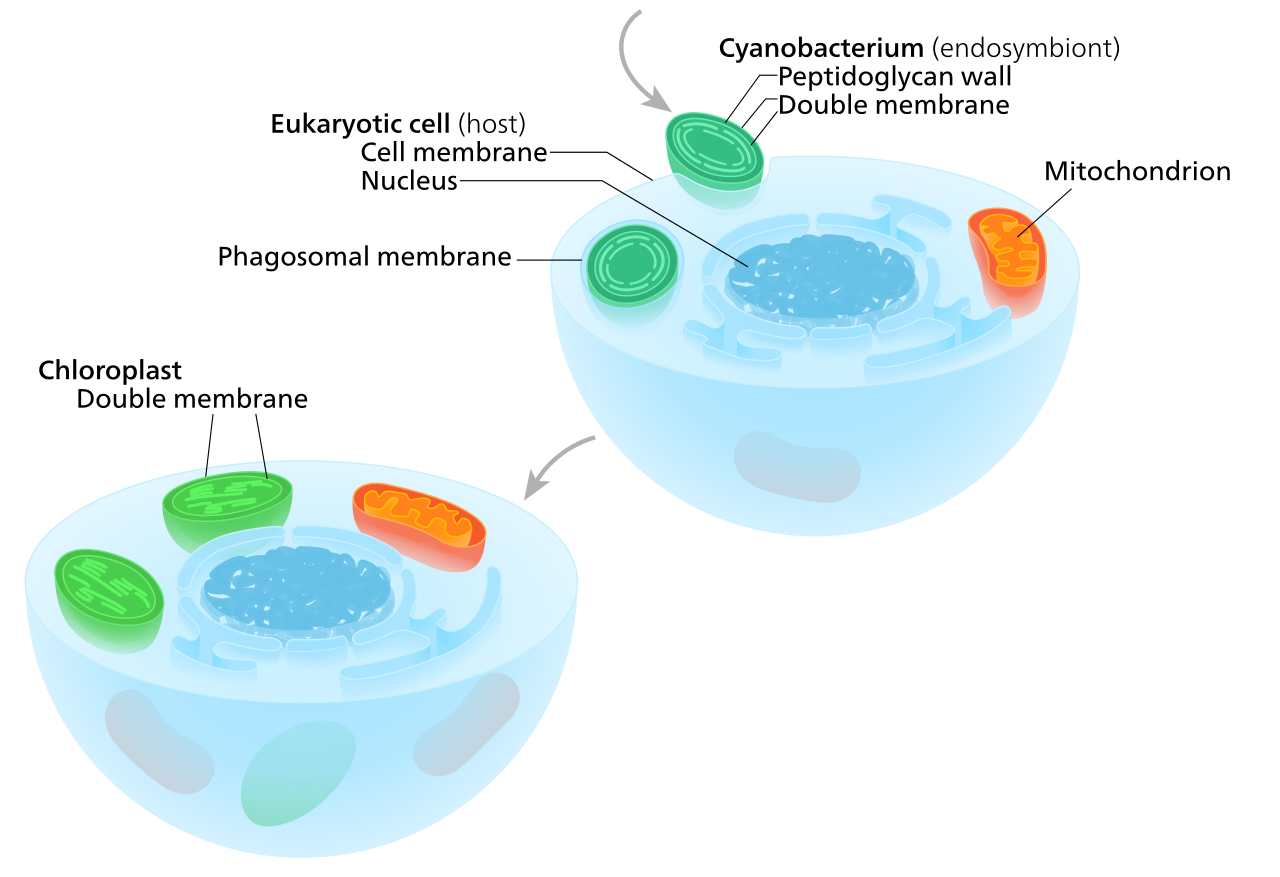

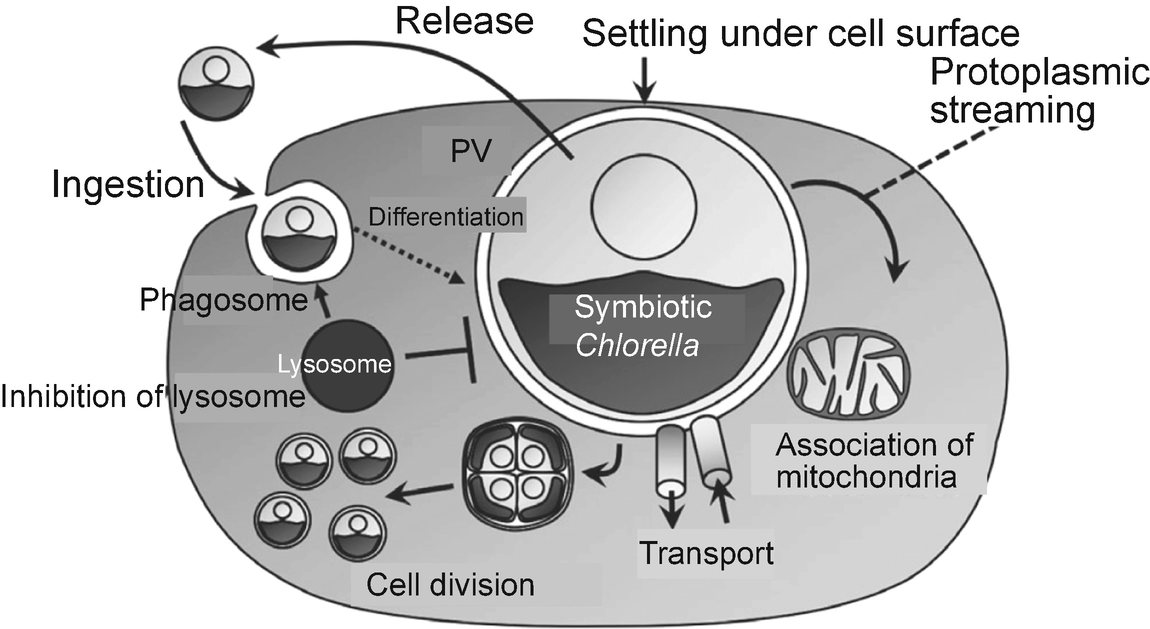

Comments
Post a Comment